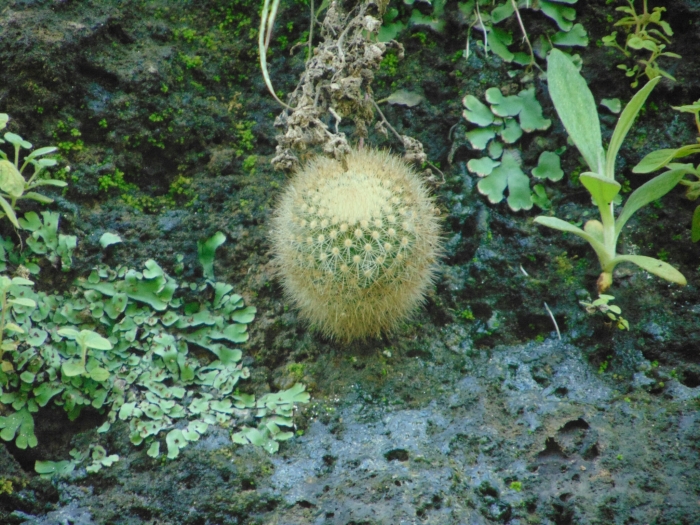Spiny Pincushion Cactus
(Mammillaria spinosissima)
Spiny Pincushion Cactus (Mammillaria spinosissima)
/
/

Jose Antonio Aranda Pineda
CC BY 4.0
Image By:
Jose Antonio Aranda Pineda
Recorded By:
Copyright:
CC BY 4.0
Copyright Notice:
Photo by: Jose Antonio Aranda Pineda | License Type: CC BY 4.0 | License URL: http://creativecommons.org/licenses/by/4.0/ | Rights Holder: Jose Antonio Aranda Pineda | Publisher: iNaturalist | Date Created: 2017-10-01T14:33:02-07:00 |











Estimated Native Range
Summary
Mammillaria spinosissima, commonly known as Spiny Pincushion Cactus, is a perennial succulent native to the volcanic rock and arid regions of central and southern Mexico. It typically forms cylindrical stems that can reach up to 12 inches (30 cm) in height and 2.5 inches (6 cm) in diameter. The stems are densely covered with reddish or white spines, which provide a striking contrast to the green of the cactus. During the spring and occasionally in the fall, it produces a ring of vivid pink to red flowers at the stem tips, which are quite showy and add to its ornamental value. The flowers are followed by small, club-shaped red fruits.
The Spiny Pincushion Cactus is valued for its ease of care, drought tolerance, and striking appearance, making it a favored choice for rock gardens, xeriscapes, and as a potted houseplant. It thrives in full sun and requires well-drained soils, preferably a cactus mix or sandy loam. Overwatering should be avoided to prevent root rot. In cultivation, it is often used as a solitary specimen or grouped with other cacti and succulents to create a desert-themed landscape. While generally pest-free, it can occasionally suffer from mealybugs or spider mites. It is also frost-sensitive and should be protected or brought indoors in regions with cold winters.CC BY-SA 4.0
The Spiny Pincushion Cactus is valued for its ease of care, drought tolerance, and striking appearance, making it a favored choice for rock gardens, xeriscapes, and as a potted houseplant. It thrives in full sun and requires well-drained soils, preferably a cactus mix or sandy loam. Overwatering should be avoided to prevent root rot. In cultivation, it is often used as a solitary specimen or grouped with other cacti and succulents to create a desert-themed landscape. While generally pest-free, it can occasionally suffer from mealybugs or spider mites. It is also frost-sensitive and should be protected or brought indoors in regions with cold winters.CC BY-SA 4.0
Plant Description
- Plant Type: Succulent
- Height: 1-2 feet
- Width: 0.25-0.3 feet
- Growth Rate: Slow
- Flower Color: Pink
- Flowering Season: Spring, Winter
- Leaf Retention: Evergreen
Growth Requirements
- Sun: Full Sun, Part Shade
- Water: Low, Medium
- Drainage: Fast, Medium
Common Uses
Drought Tolerant, Low Maintenance, Potted Plant, Rock Garden, Showy Flowers
Natural Habitat
Native to volcanic rock and arid regions of central and southern Mexico
Other Names
Common Names: Spiny Pincushion Cactus
Scientific Names: , Mammillaria spinosissima, Mammillaria flava, Mammillaria pitcayensis, Mammillaria spinosissima, Mammillaria spinosissima f. typica, Mammillaria spinosissima var. genuina,
GBIF Accepted Name: